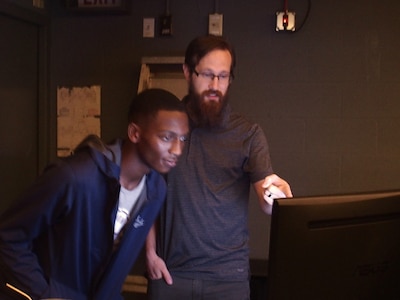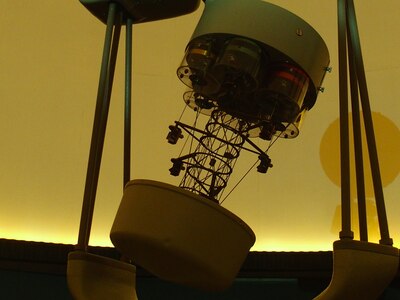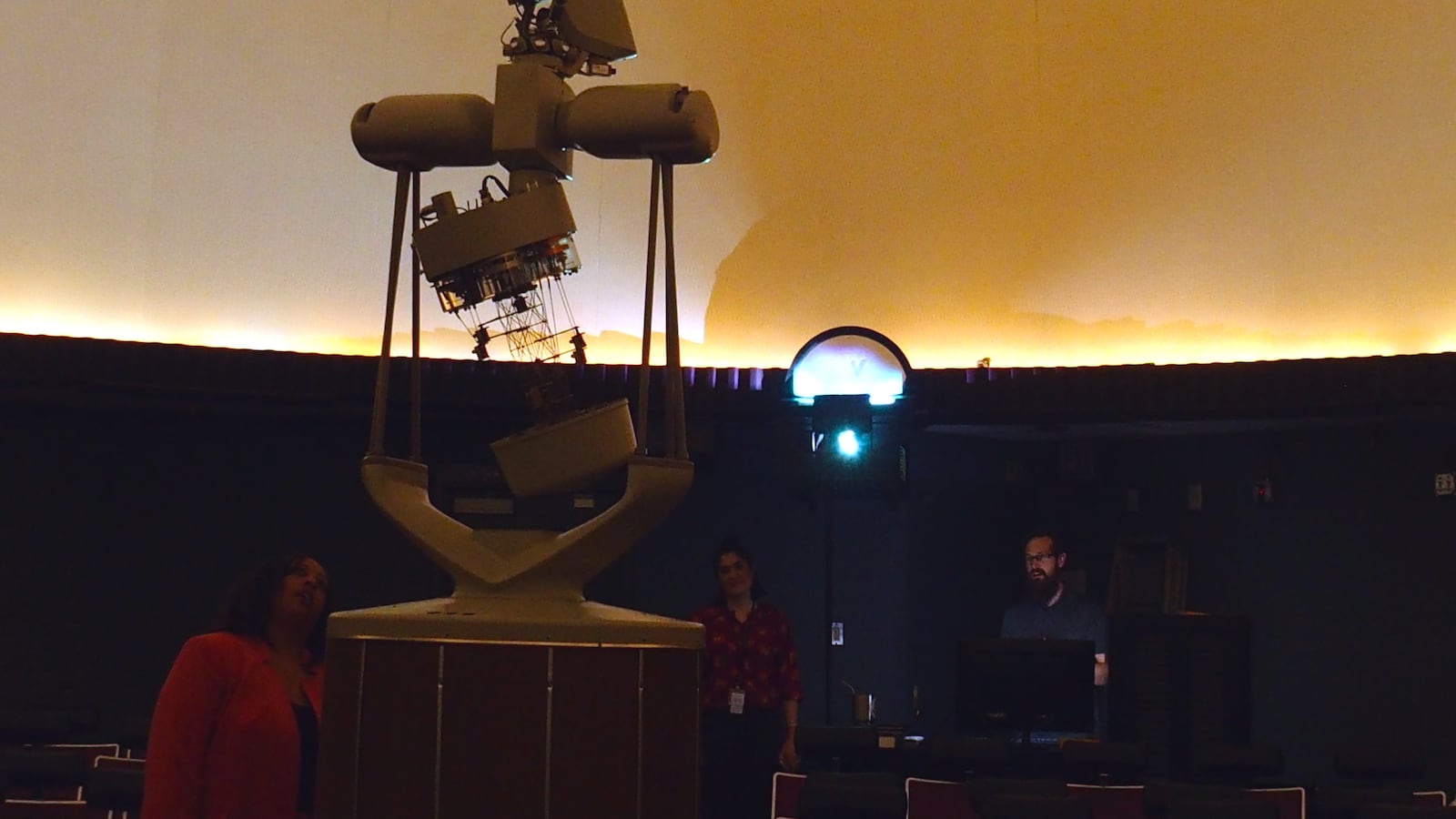Keshawn Glover remembers hearing his dad talk about field trips to Craigmont High School’s planetarium decades ago, but last week the high school senior got to experience the school’s crown jewel for himself.
Sitting back in chairs built in the 1970s, Glover leaned back with his class to watch a video that took them deep into the inner workings of a plant cell on a large immersive dome-shaped screen that spreads out above and around them.
“It feels like you’re in a roller coaster,” said Glover, a senior. “I was just amazed because it was my first time seeing it work full speed.”
The planetarium, nestled behind a door near the school’s gymnasium, shut down in 2010 after a longtime instructor retired. The equipment languished, but last week, $100,000 in restorations were completed. The work still isn’t done — a stronger audio system and better lighting are still needed. In addition, some of the features are still analog and not digital, and the huge screen desperately needs cleaning. But the school’s prized possession is up and running.

The planetarium is more than just a nice feature, educators say. It helps garner student interest in careers they might not have known about before, such as astronomy and aerospace engineering.
“I don’t feel like our kids are exposed to all the opportunities out there for them,” said Wayne Oellig, a science teacher at Craigmont High School who has been the school’s point person on finding ways to connect curriculum to the planetarium.
“The space industry is really growing now,” he continued. “I tell my students, ‘You might be able to have a job in space when you’re older.’”
Paying for the project has been a collaborative effort. Shelby County Schools covered the startup operational costs from money allocated to school board members to fund projects of their choice. Teresa Jones, whose district includes Craigmont High, also galvanized other board members to use some of their school project money. Finally, alumni of the Raleigh-area high school continue to raise money to cover the nearly $25,000 needed to bring the theater up to 21st-century standards.

Oellig compared the planetarium experience to the 1990s cartoon TV show “Magic School Bus,” where a class of students learned from experience — from venturing inside a human body to understand a cold, to traveling to the Amazon River to study frogs. “It’s kinda like Ms. Frizzle, but all around you.”
From our archives: With solar eclipse looming, shuttered school planetarium represents ‘missed opportunity’ for Memphis students
Oellig said the planetarium’s benefits extend far beyond science. History teachers can show videos designed for the giant screen that take students onto a historic battlefield as if they were there. A Spanish teacher wants to show what the night sky would have looked like to ancient Mayans and how those constellations informed culture.
And that matters to students like Glover.
Usually, “we’re either looking at a textbook or a presentation on a projector,” he said. “But to get out of the classroom but still be in a learning environment would really capture our attention, whatever subject it is.
“It will make students even more interested in it. And the more interested we are in it, the better our grades are and we’ll do better on tests,” he said.

